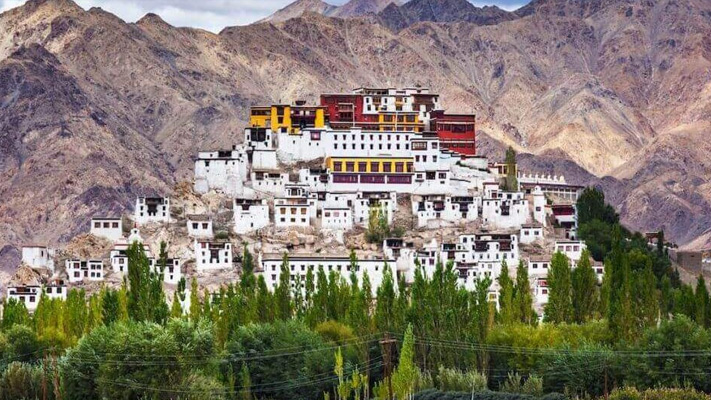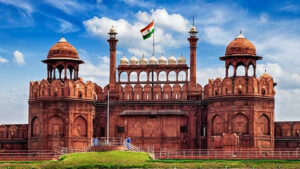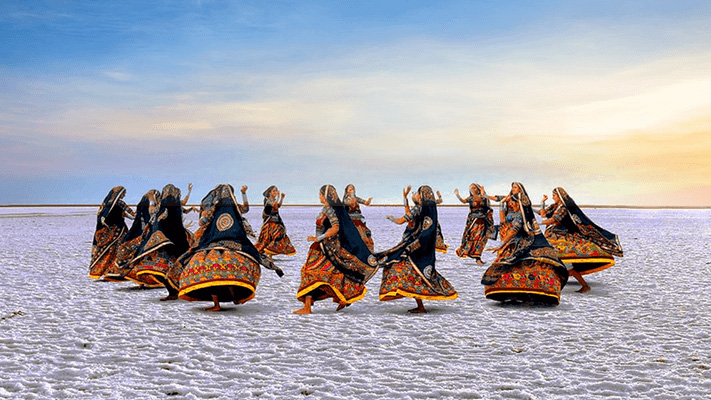7 OF THE MOST BREATH-TAKING MONASTERIES IN INDIA – SPIRITUAL JOURNEY TO TRANQUILITY

In the remote and mystical corners of India, where the heavens touch the earth, lie monasteries that defy human comprehension. High above the mortal realm, perched on precipitous cliff sides and lofty mountaintops, these sacred havens emanate an aura of transcendence and wonderment. With awe-inspiring determination, ancient artisans and devotees crafted these architectural marvels, merging their spiritual aspirations with the very essence of nature. From the rugged peaks of the Himalayas to the hidden valleys of Arunachal Pradesh and Ladakh, these monasteries stand as testaments to the indomitable human spirit and the unwavering quest for divine communion. As you step foot into these ethereal abodes, be prepared to be enveloped in an atmosphere of serenity and enlightenment, where the harmony of the surroundings resonates with the depths of your soul. Open your heart to the whispers of ancient wisdom and let the mystic beauty of these cliffside and mountaintop monasteries transport you to a realm where the boundaries between the physical and spiritual blur into a seamless tapestry of celestial enchantment.

1. Phuktal Monastery, Zanskar
Phuktal Monastery, located in the remote Zanskar Valley, is a mesmerizing gem among the Buddhist monasteries in India. Situated in the rugged and breathtaking landscape, Phuktal Monastery is an architectural marvel that appears to cling to the edge of a cliff.
This monastery holds a significant spiritual and historical importance in the region. It showcases a unique blend of ancient traditions and natural beauty, making it a must-visit destination for those seeking both tranquility and adventure.
Phuktal Monastery is accessible by undertaking a trekking journey through the stunning Zanskar Valley. As you approach the monastery, you’ll be captivated by its striking appearance, carved into the mountain face. The location itself adds to the sense of wonder and awe, offering a serene and secluded atmosphere.
Inside the monastery, you’ll discover ornate prayer halls adorned with beautiful frescoes, ancient scriptures, and sacred artifacts. The peaceful ambiance is enhanced by the sound of monks chanting and the aroma of burning incense.
Visiting Phuktal Monastery not only allows you to experience the spiritual essence of Buddhism but also offers an opportunity to immerse yourself in the awe-inspiring natural surroundings. The majestic Zanskar River flowing nearby and the towering mountains create a backdrop that truly complements the monastery’s splendor.
2. Thiksey Monastery, Ladakh
Thiksey Monastery, situated in the beautiful region of Ladakh, is a magnificent Buddhist monastery that holds both cultural and spiritual significance. Perched on a hilltop, it offers breathtaking panoramic views of the surrounding landscape.
Often referred to as the “Mini Potala Palace,” Thiksey Monastery stands tall with its impressive architecture, resembling the iconic Potala Palace in Lhasa, Tibet. The monastery complex comprises multiple levels and buildings, with its main assembly hall being the focal point. The structure is adorned with intricate murals, vibrant thangkas (religious paintings), and statues of Buddha and various deities.
One of the highlights of Thiksey Monastery is the morning prayer ceremony. Visitors can witness the monks clad in vibrant robes as they gather to chant prayers and perform religious rituals. The ethereal sound of their chants, accompanied by the aroma of incense, creates a serene and contemplative atmosphere.
Exploring the monastery complex allows you to discover hidden chambers, meditation halls, and a rich collection of Buddhist scriptures. The rooftop provides a breathtaking panoramic view of the Indus Valley, making it an ideal spot for reflection and soaking in the beauty of the surroundings.
Thiksey Monastery also houses a large Maitreya Buddha statue, which stands at an impressive height of around 49 feet. This statue, adorned with gold paint and precious stones, is a symbol of compassion and peace.
Visiting Thiksey Monastery not only offers a glimpse into the vibrant Buddhist culture but also provides an opportunity for introspection and spiritual rejuvenation. The tranquil ambiance, coupled with the stunning Ladakhi landscape, creates an unforgettable experience for visitors.
Thiksey Monastery stands as a remarkable testament to the rich spiritual heritage of Ladakh and continues to inspire visitors with its grandeur and serenity.

3. Hemis Monastery, Ladakh
Hemis Monastery, located in the enchanting region of Ladakh, is a truly remarkable and awe-inspiring Buddhist monastery. Nestled amidst the rugged mountains, Hemis Monastery is not only one of the largest but also one of the wealthiest monasteries in India.
The monastery is renowned for its architectural splendor, cultural significance, and breathtaking natural surroundings. As you approach Hemis Monastery, you’ll be greeted by its striking exterior, adorned with vibrant colors and intricate designs. The blend of traditional Tibetan and Ladakhi architectural styles creates a visually captivating sight.
Stepping inside the monastery, you’ll discover a world of serenity and spirituality. The main prayer hall, adorned with exquisite wall paintings and ornate decorations, serves as the centerpiece of the monastery. It houses a remarkable collection of ancient thangkas, religious artifacts, and statues of Buddhist deities, each holding deep symbolic meaning.
Hemis Monastery is not just a place of worship but also a vibrant center of Buddhist culture and learning. It hosts the famous Hemis Festival, a grand celebration that takes place annually, attracting visitors from far and wide. During the festival, the monastery comes alive with vibrant mask dances, traditional music, and fervent prayers, providing a glimpse into the rich cultural heritage of the region.
Surrounded by the picturesque landscape of Ladakh, Hemis Monastery offers a sense of tranquility and spiritual retreat. The peaceful ambiance, coupled with the panoramic views of the snow-capped mountains and the Indus River flowing below, creates a truly mesmerizing experience.
Visiting Hemis Monastery allows you to immerse yourself in the essence of Buddhism, witness the daily rituals of the monks, and gain a deeper understanding of the spiritual traditions. It is a place where one can find solace, introspection, and a connection with something greater than oneself.
4. Tawang Monastery, Arunachal Pradesh
Tawang Monastery, located in the serene landscapes of Arunachal Pradesh, is a captivating and spiritually significant Buddhist monastery. Perched atop a hill at an elevation of 10,000 feet, it is not only the largest monastery in India but also an iconic symbol of Tibetan Buddhism.
The journey to Tawang Monastery takes you through breathtaking mountain vistas and picturesque valleys, adding to the sense of anticipation and wonder. As you approach the monastery, you’ll be greeted by its imposing white façade, traditional architectural elements, and colorful prayer flags fluttering in the wind.
Stepping inside Tawang Monastery, you’ll be enveloped in a tranquil ambiance, enhanced by the fragrance of incense and the soothing sound of Buddhist chants. The monastery complex comprises multiple buildings, prayer halls, and residential quarters for monks.
The main prayer hall, known as the Dukhang, is adorned with intricate murals, vibrant thangkas, and statues of Buddha and Bodhisattvas. It is a place of reverence and spiritual devotion, where monks and devotees come together for prayers and rituals.
Tawang Monastery is also renowned for its precious artifacts, including ancient scriptures, Buddhist scriptures written in gold, and intricately carved wooden blocks used for printing sacred texts. These treasures reflect the rich cultural heritage and historical significance of the monastery.
Beyond its spiritual importance, Tawang Monastery offers breathtaking views of the surrounding valleys, snow-capped mountains, and the Tawang River flowing gracefully through the landscape. The monastery also serves as a cultural hub, hosting vibrant festivals such as Losar and Torgya, during which traditional dances, music, and rituals take place, providing a glimpse into the vibrant cultural traditions of the region.
Visiting Tawang Monastery allows you to immerse yourself in the profound spiritual atmosphere, witness the daily lives of the monks, and gain a deeper understanding of Tibetan Buddhist traditions. It is a place where one can find solace, connect with spirituality, and admire the natural beauty that surrounds it.

5. Tabo Monastery, Spiti (Himachal Pradesh)
Tabo Monastery, nestled in the enchanting Spiti Valley of Himachal Pradesh, is a treasured gem among Buddhist monasteries in India. Known as the “Ajanta of the Himalayas,” it holds immense historical, artistic, and spiritual significance.
Tabo Monastery is one of the oldest functioning Buddhist monastic complexes in the world, with origins dating back over a thousand years. Its ancient mud-brick structures and unique architecture have stood the test of time, offering a glimpse into the rich heritage of the region.
As you approach Tabo Monastery, you’ll be captivated by its serene setting amidst the stark desert-like landscapes of Spiti. The monastery complex consists of several temples, assembly halls, meditation caves, and residential quarters for monks.
The main temple, known as the Temple of the Enlightened Gods, is a treasure trove of Buddhist art and iconography. Its walls are adorned with intricate frescoes, depicting vivid and detailed narratives from Buddhist scriptures. The artwork showcases the skill and devotion of the ancient artisans who brought these stories to life.
Tabo Monastery is also home to a remarkable collection of scriptures, ancient manuscripts, and thangkas, some of which are considered to be over a thousand years old. The monastery’s importance as a center of learning and meditation is evident in the peaceful atmosphere that envelops the complex.
Beyond its historical and artistic allure, Tabo Monastery offers visitors a profound sense of tranquility and spiritual introspection. The monastery’s isolated location, away from the hustle and bustle of modern life, allows for a deeper connection with oneself and the surrounding natural beauty.
Exploring the monastery and witnessing the daily rituals and prayers of the resident monks provides an insight into the vibrant Buddhist traditions and way of life. The peaceful ambiance, coupled with the panoramic views of the rugged Spiti Valley, creates an unforgettable experience for those seeking solace and spiritual awakening.
6. Rumtek Monastery, Sikkim
Rumtek Monastery, nestled in the scenic hills of Sikkim, is a remarkable Buddhist monastery that exudes both architectural grandeur and spiritual significance. It stands as a prominent symbol of Tibetan Buddhism and serves as the seat of the Karmapa, the head of the Karma Kagyu lineage.
Located near the capital city of Gangtok, Rumtek Monastery is a place of pilgrimage and spiritual retreat. The monastery’s stunning architecture showcases a blend of traditional Tibetan and modern influences, making it a visual delight for visitors.
As you approach Rumtek Monastery, you’ll be greeted by its majestic entrance, adorned with intricate artwork and vibrant colors. The sprawling complex encompasses various prayer halls, educational institutes, residential quarters, and a golden stupa that holds sacred relics.
The main prayer hall, known as the Dharma Chakra Centre, is a spacious and ornately decorated hall where monks and devotees gather for prayers and rituals. The walls are adorned with beautiful murals depicting Buddhist iconography, while statues of Buddhas and Bodhisattvas line the altar.
Rumtek Monastery is also home to a vast collection of ancient scriptures, Buddhist texts, thangkas, and religious artifacts. These treasures reflect the rich cultural and religious heritage of the region and provide insight into the profound teachings of Tibetan Buddhism.
Beyond its architectural and cultural significance, Rumtek Monastery offers visitors a serene and peaceful atmosphere. The meticulously maintained gardens, lush surroundings, and panoramic views of the surrounding hills create an ideal setting for contemplation and meditation.
Throughout the year, Rumtek Monastery hosts various religious ceremonies and festivals, such as Losar and Kagyed, which showcase colorful mask dances, traditional music, and spiritual rituals. These events provide a glimpse into the vibrant and living Buddhist traditions that thrive within the monastery.
A visit to Rumtek Monastery offers not only an opportunity to witness the splendor of Tibetan Buddhist architecture but also a chance to delve into the depths of spirituality. It is a place where one can find solace, gain spiritual insight, and experience the profound teachings of Buddhism.

7. Ghum Monastery, West Bengal
Ghum Monastery, located in the picturesque town of Ghum in West Bengal, is a captivating Buddhist monastery that holds both historical and spiritual significance. Situated at an altitude of 7,407 feet, it is one of the highest monasteries in India and offers stunning views of the surrounding mountains and valleys.
Ghum Monastery, also known as Yiga Choeling Monastery, was established in 1875 by Lama Sherab Gyatso. The monastery is home to several Buddhist monks who engage in spiritual practices and preserve the teachings of Tibetan Buddhism.
The monastery’s architectural style showcases a blend of traditional Tibetan and Sikkimese influences. Its colorful façade, adorned with intricate artwork and ornate details, stands out against the backdrop of the majestic Himalayas.
Upon entering Ghum Monastery, visitors are greeted by the peaceful atmosphere and the sound of Buddhist chants and prayers. The main prayer hall is adorned with beautiful thangkas, ancient scriptures, and statues of Buddhist deities. The fragrance of incense and the soft glow of butter lamps create a serene ambiance conducive to meditation and reflection.
One of the highlights of visiting Ghum Monastery is witnessing the morning prayer ceremony. The monks, dressed in their maroon robes, gather in the prayer hall to chant and perform rituals, providing a glimpse into their daily spiritual practices.
Adjacent to the monastery, there is a museum that showcases a collection of Buddhist artifacts, including ancient manuscripts, ritual objects, and historical relics. Exploring the museum allows visitors to delve deeper into the rich cultural and religious heritage of the region.
Ghum Monastery is not only a place of worship but also a popular tourist attraction. Its elevated location and panoramic views make it a must-visit destination for nature lovers and photography enthusiasts. The serene surroundings and the tranquil atmosphere offer a welcome respite from the bustling city life.

















































